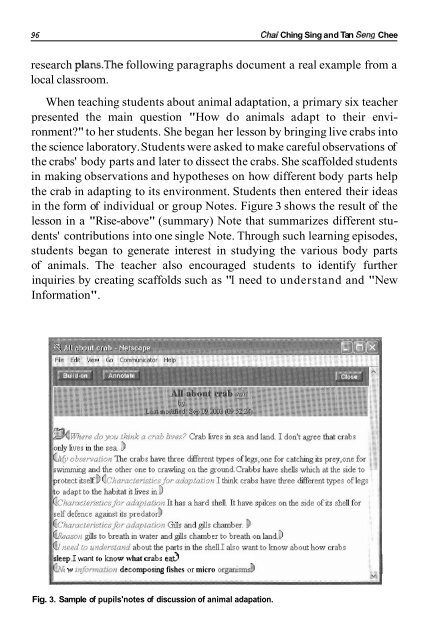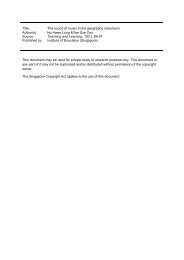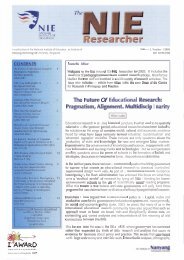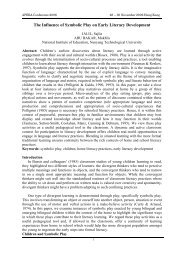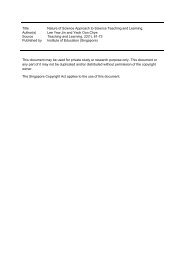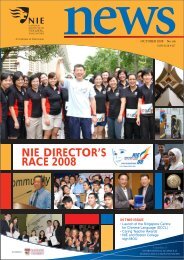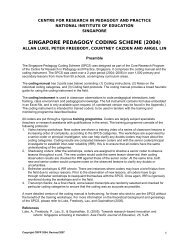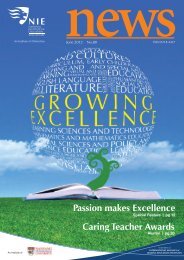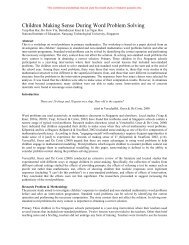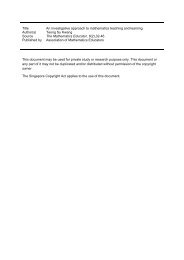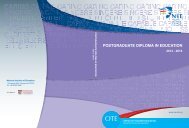Cooperative Learning - NIE Digital Repository - National Institute of ...
Cooperative Learning - NIE Digital Repository - National Institute of ...
Cooperative Learning - NIE Digital Repository - National Institute of ...
You also want an ePaper? Increase the reach of your titles
YUMPU automatically turns print PDFs into web optimized ePapers that Google loves.
96 Chai Ching Sing and Tan Seng Cheeresearch plans.The following paragraphs document a real example from alocal classroom.When teaching students about animal adaptation, a primary six teacherpresented the main question "How do animals adapt to their environment?"to her students. She began her lesson by bringing live crabs intothe science laboratory. Students were asked to make careful observations <strong>of</strong>the crabs' body parts and later to dissect the crabs. She scaffolded studentsin making observations and hypotheses on how different body parts helpthe crab in adapting to its environment. Students then entered their ideasin the form <strong>of</strong> individual or group Notes. Figure 3 shows the result <strong>of</strong> thelesson in a "Rise-above" (summary) Note that summarizes different students'contributions into one single Note. Through such learning episodes,students began to generate interest in studying the various body parts<strong>of</strong> animals. The teacher also encouraged students to identify furtherinquiries by creating scaffolds such as "I need to understand and "NewInformation".sleep.1 want to know what crabs eadw i~gbruimidon decomposing fishes or micro orgmirmsbFig. 3. Sample <strong>of</strong> pupils'notes <strong>of</strong> discussion <strong>of</strong> animal adapation.


